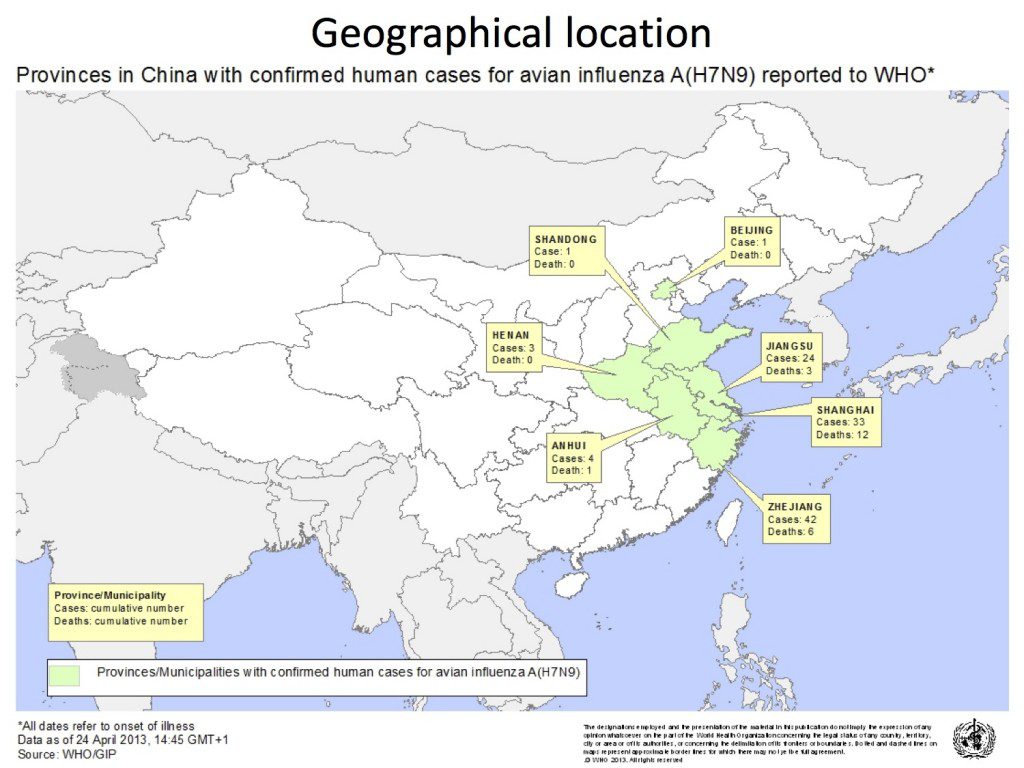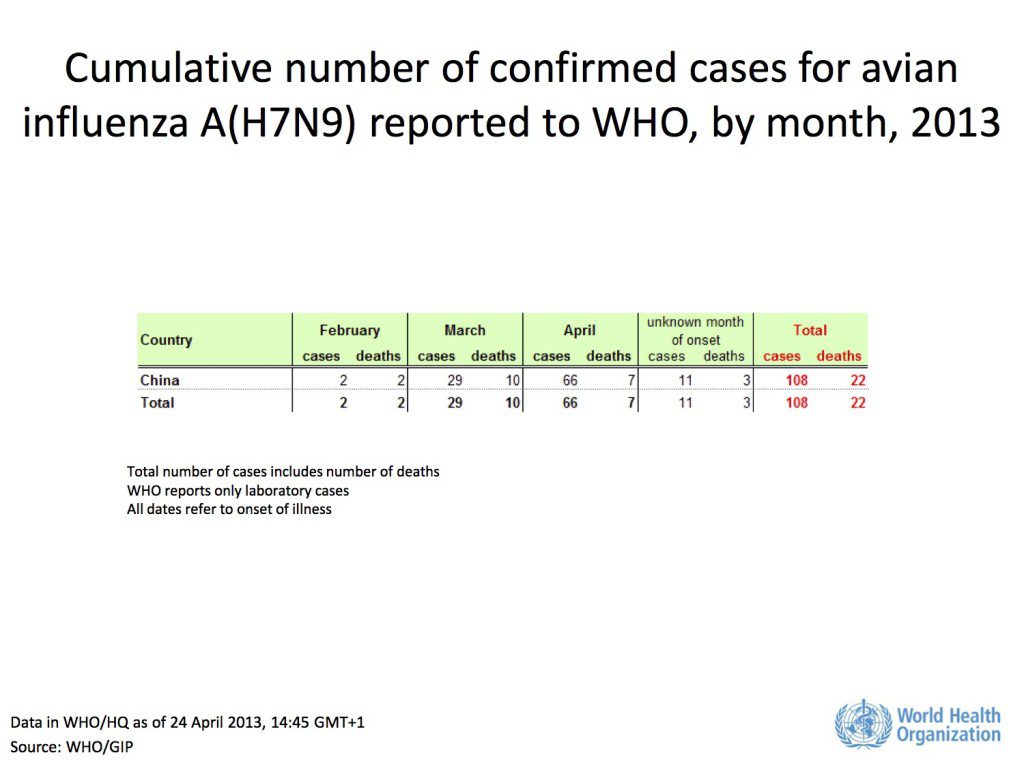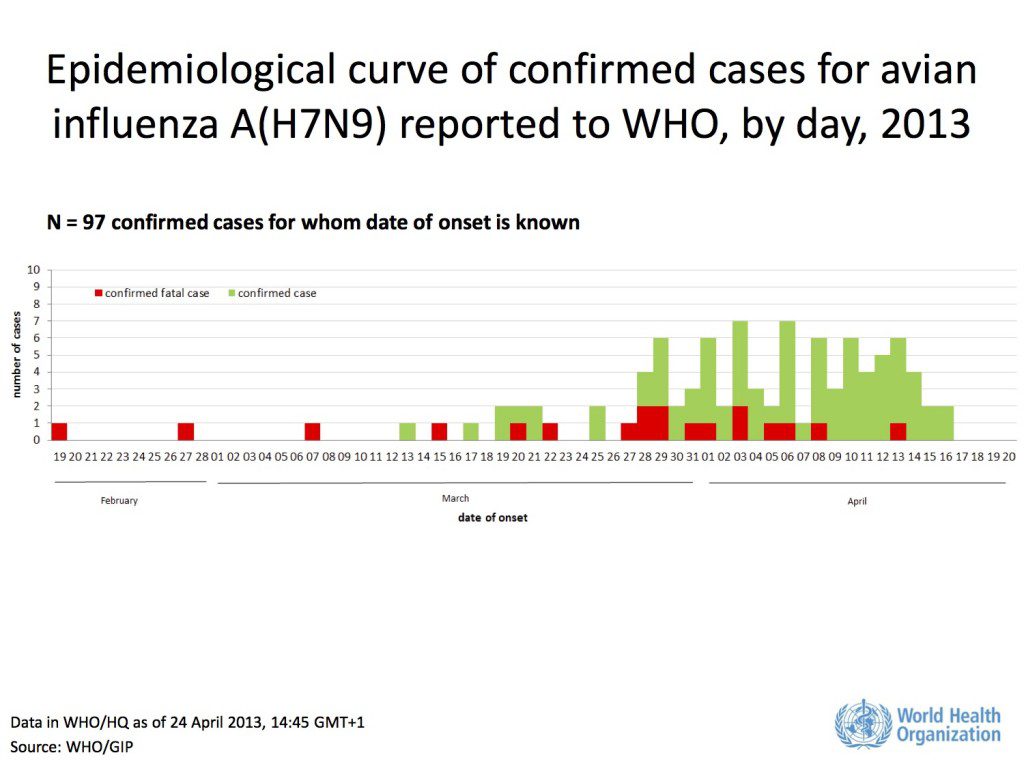The World Health Organization has been publishing weekly reports on the avian influenza A(H7N9) outbreak which include the geographical location of each case, the cumulative number of cases, and the epidemiological curve. Go to this page at the WHO website for an archive of the weekly reports (there you will also find other useful information on the H7N9 outbreak). Images for report #3 of 24 April 2013 are reproduced below. Click each image for a larger view.
6 thoughts on “WHO report on human cases of avian influenza A(H7N9) infection”
Comments are closed.




also this :
http://www.uq.edu.au/vdu/VDUInfluenza_H7N9.htm
Dear Dr.Racaniello, one question that intrigues
me is why do influenza viruses infect some species and not others. Birds,
humans, swine, horses and few other species get infected with influenza
viruses, while others species such as ruminants etc don’t get infected. What is
that prevents? Is it in the immune system? Is it receptor tropism?
Influenza A viruses infect a variety of animals, including humans, birds, swine, horses, and dogs. They have sometimes been isolated from cats, tigers and leopards, stone martens and Owston civets, whales, seals, mink, and camels. Serologic evidence also suggests exposure of several ruminant, reptile, and amphibian species to immunogens related to influenza viruses. Why other species are not regularly infected is not known, but sialic acid receptor distribution in the respiratory tract is probably a major determinant. As far as I know no immune mechanisms have been elucidate.
obviously mobility is a key-determinant. The virus wants to spread.
Before man sailed the seas, there was not much human flu.
Birds do fly around. Bats too and they also have flu.
Why not mosquitoes and insects ? Well, the genome is small and the
replication process complicated. Amazing that it works well in so many
different cell-types already
Thanks Dr.Racaniello.
Pingback: Human infections with avian influenza H7N9 virus from wet market poultry